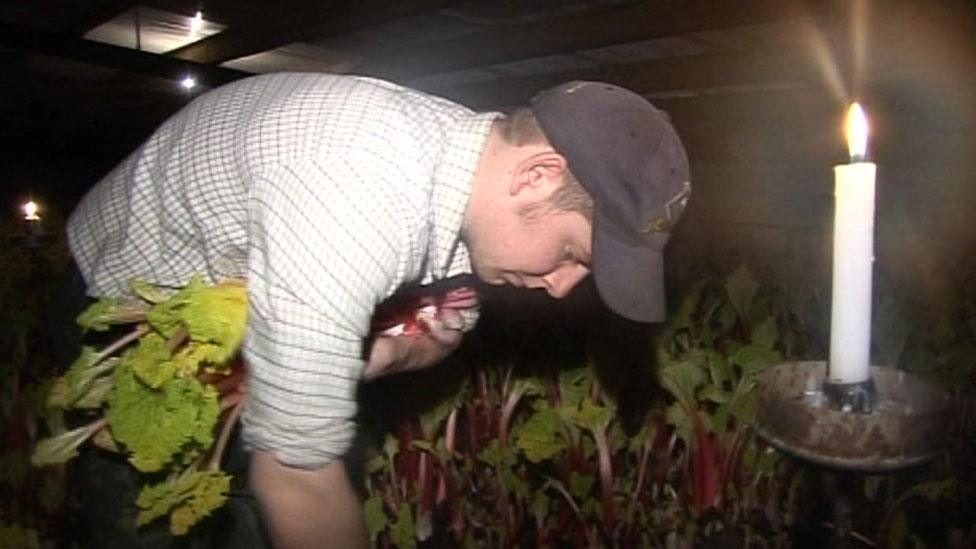'Our Yorkshire rhubarb is eaten in Paris and Miami'
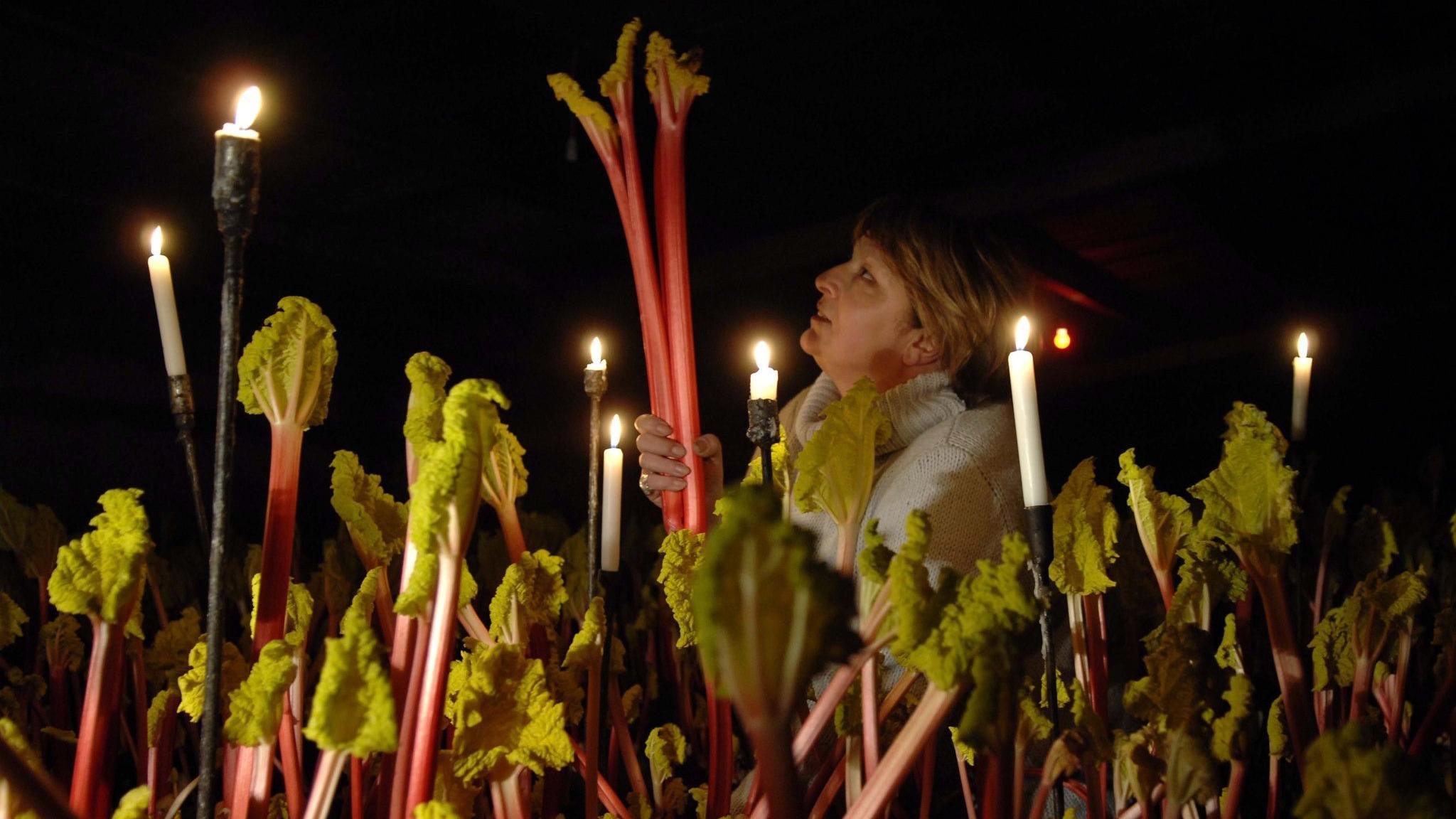
Janet and Neil Oldroyd-Hulme are the fifth generation of rhubarb growers at E Oldroyd & Sons.
- Published
While much of the country shivers in sub-zero temperatures, in warm cosy sheds in West Yorkshire pink sticks of rhubarb are growing at rates of an inch a day.
Not many crops are harvested in the dead of winter, but the first few weeks of January are the peak of forced rhubarb season.
It is the busiest time of year for the nine families who are continuing the age-old tradition in a 9 sq mile (23km sq) area between Leeds, Wakefield and Bradford known as the Rhubarb Triangle.
Bob Tomlinson and his wife Paula, from Pudsey, are the fourth generation of Tomlinson rhubarb growers.
He says they will harvest about 40 tonnes a week between the two of them during January.
"It goes from 0mph at Christmas to 200mph now.
"It goes crazy because we only have a three-month period. It's got that seasonality that not much has and people look forward to it."
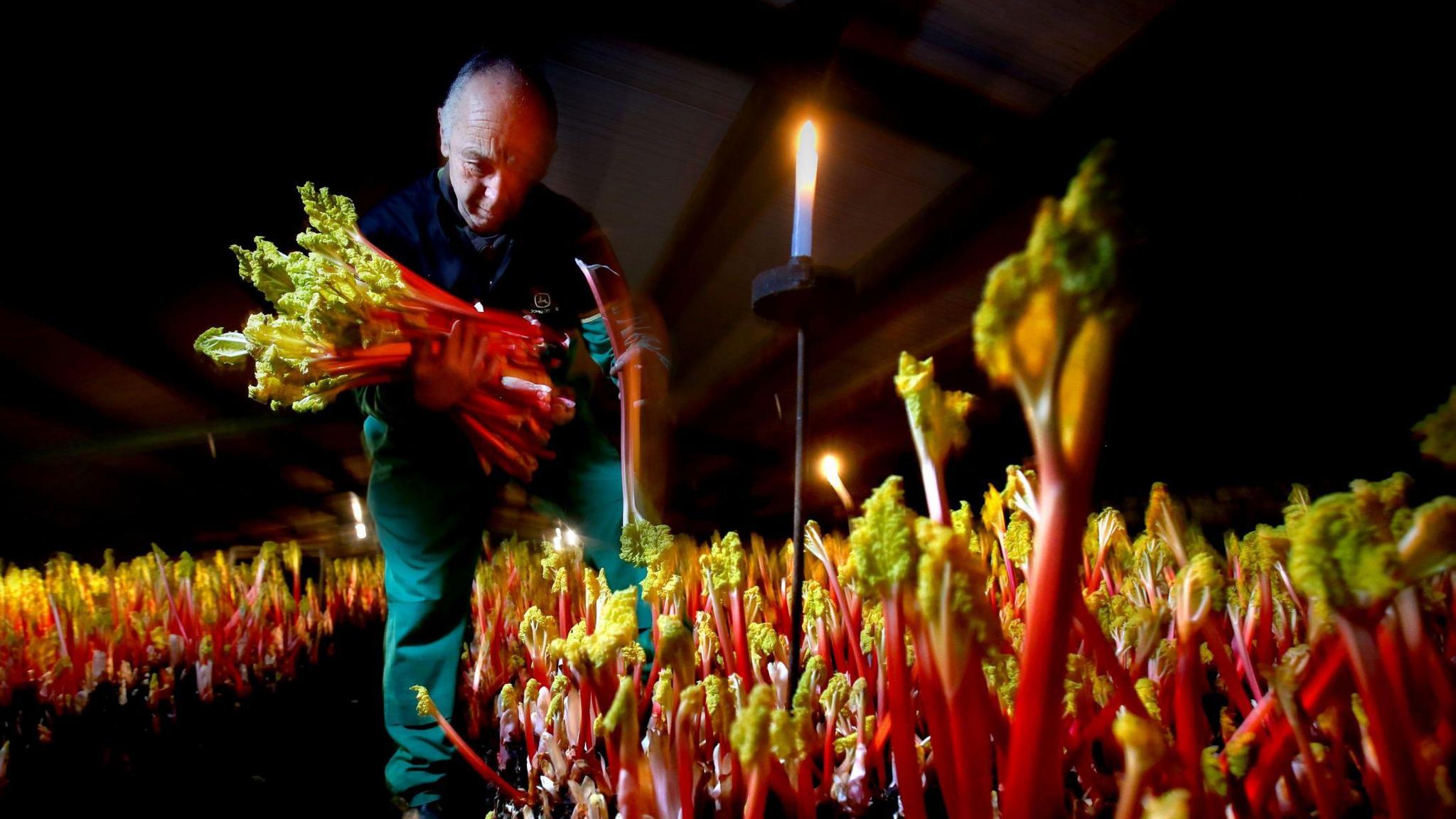
The fastest growing rhubarb varieties can grow up to an inch a day
The process is long and expensive. It is grown outside for two years and then when the roots are ready they are moved into forcing sheds – pitch-black sheds kept at ambient temperatures.
In the sheds the roots begin to grow sticks of the reddish pink vegetable with yellow leaves - sometimes making popping and creaking noises as they grow.
And then, when ready, they are picked by candlelight to keep the sheds as dark as possible.
Mr Tomlinson says: "We've got heaters so we keep it at about 12-13 degrees. It's all done by manual labour but it's quite a cosy job. If you're harvesting, you're cosy."
But rhubarb, which is a native plant of Siberia, also needs the colder temperatures.
According to Janet Oldroyd-Hulme, director of E Oldroyd & Sons in Rothwell, a frost is essential for the roots – and is key to the sweeter, more tender sticks that the forcing process creates.
She says: "We measure frost nightly in the soil.
"Once the frost converts the carbohydrate in the root to glucose that root is tricked into growth. They grow from their own energy reserves.
"We provide heated sheds and mist irrigation, so it gets warmer temperatures. The fastest growing varieties can grow up to an inch a day.
"As the sticks are pushing past each other you hear creaking as it grows, a bit like your old bones as you get out of a chair."
In the early 20th Century there were 200 farms growing rhubarb in the Triangle, but today just nine remain.
The area was ideal for cultivation because it was a situated in a frost pocket and there was cheap coal available from local mines to heat the sheds. Special rhubarb trains ran daily from Ardsley Station until the 1960s, and farmers elsewhere in the country could not compete with Yorkshire's output.
Mr Tomlinson says while the crop fell out of fashion in the 1980s and 90s its popularity has bounced back in recent years.
"My grandad and my dad in the 1950s, 1960s and 1970s had 12 rhubarb sheds. It was a huge operation because there was nothing else in winter so that's why there were 200 growers.
"In the 1980s and 1990s it went out of fashion and we went down to one shed, but in the last 20 years it's been growing and building momentum, which is why we've built it back up to five sheds now. The last couple of years have been crazy."
Mrs Oldroyd-Hulme says it was a reaction to overconsumption of rhubarb that caused a backlash in the mid-20th Century.
"So many growers left the industry in the downturn years after the Second World War when people turned away from rhubarb.
"They were sick to the teeth of rhubarb because they had eaten so much during the war. It was exported for the troops too, probably to keep them regular. But people had roots in their garden."
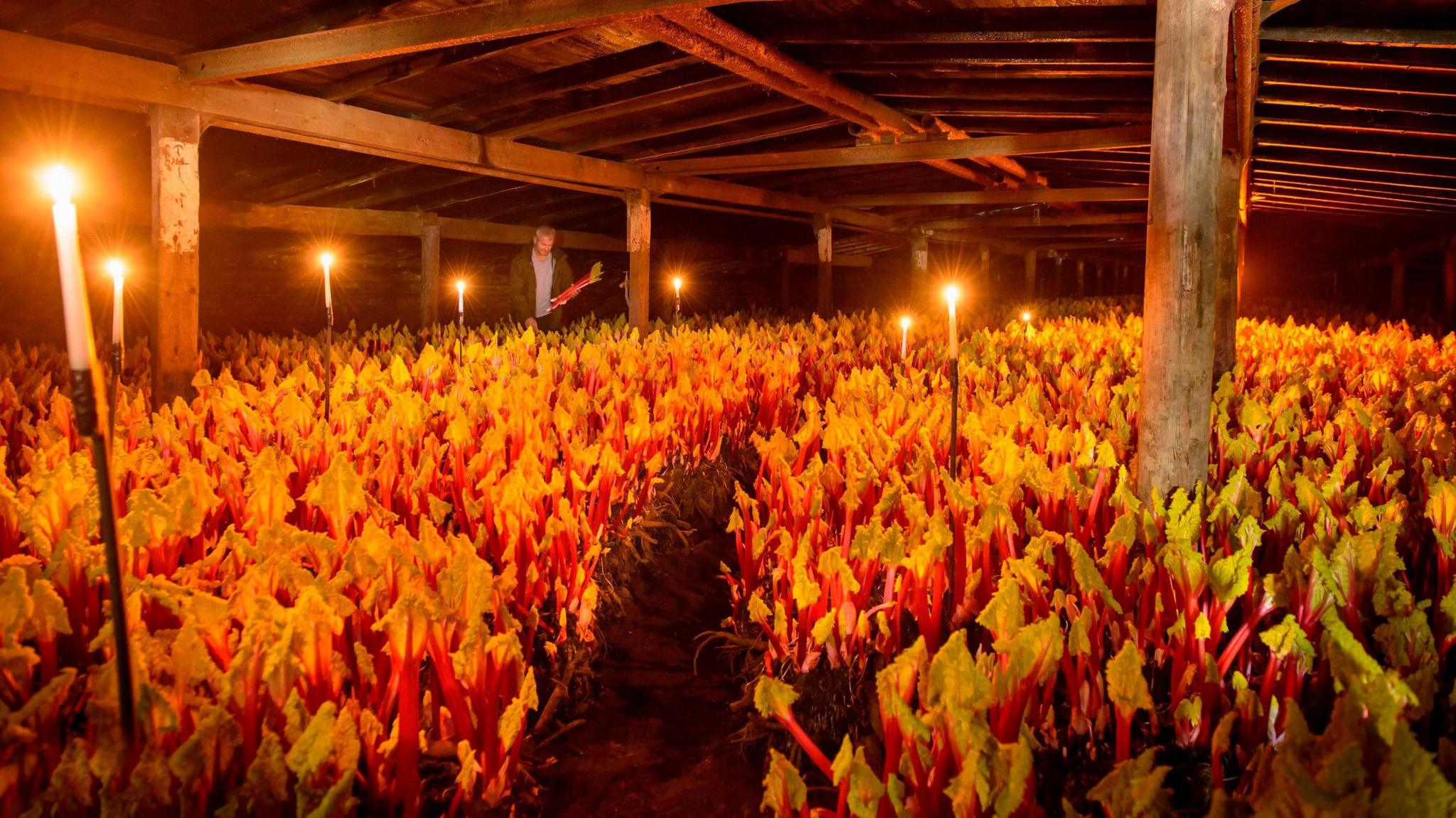
Forced rhubarb is grown in dark sheds and picked by candlelight
Today rhubarb's popularity has been boosted by the sale of flavoured gins as well as artisan bakeries and international chefs looking for hand-grown produce.
Wakefield even has its own rhubarb festival, held every year in February.
Mr Tomlinson says 90% of his crop goes into catering.
"It goes everywhere," he says.
"We send half a tonne a week to New York and Paris. Chef Tommy Banks uses it. A lot go to bakeries and we send to a jam manufacturer. It goes to New York and then they ship to Miami. Yorkshire rhubarb harvested by candlelight, in Miami."
And if you want to grow it yourself, Mrs Oldroyd-Hulme recommends swapping sugar for orange juice for a healthier treat.
She says: "I don't add sugar or even a sugar substitute. Nothing goes better with rhubarb than orange and ginger.
"It's got massive health benefits. We've known for years that you should eat more fibre but it has a massive history.
"The root was dried and ground and it gave a powder that was used for thousands of years. In 2700BC there is written evidence that rhubarb was being used as a medicine."
Listen to highlights from West Yorkshire on BBC Sounds, catch up with the latest episode of Look North or tell us a story you think we should be covering here, external.
- Published16 February 2024
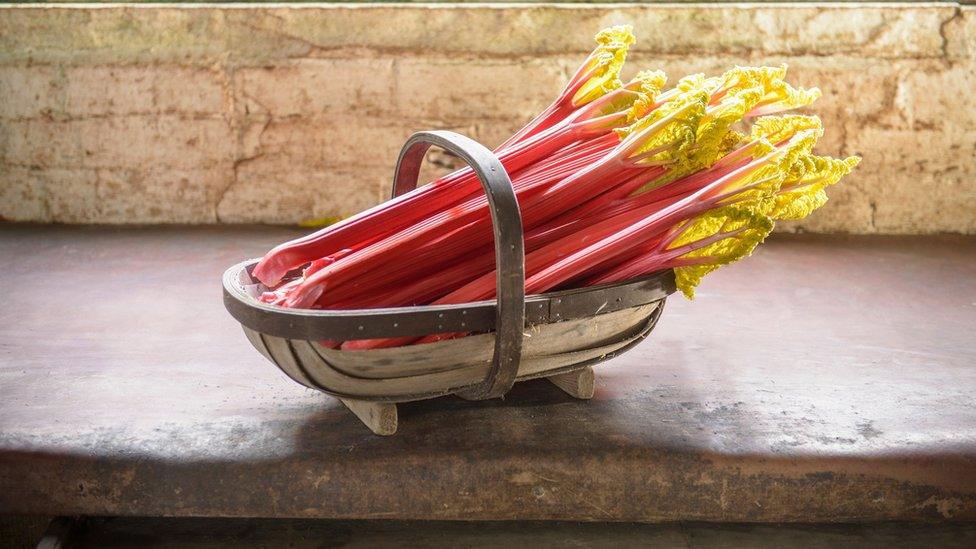
- Published22 January 2016
